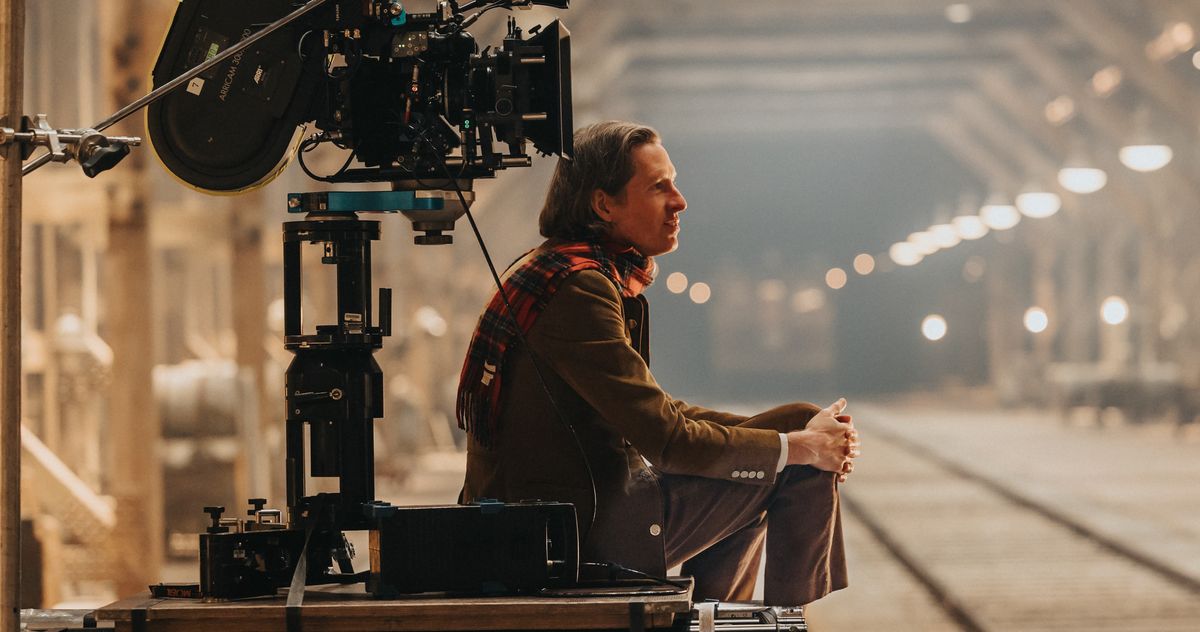The Shadowy Undercurrents Of Wes Anderson's Cinematic World

Welcome to your ultimate source for breaking news, trending updates, and in-depth stories from around the world. Whether it's politics, technology, entertainment, sports, or lifestyle, we bring you real-time updates that keep you informed and ahead of the curve.
Our team works tirelessly to ensure you never miss a moment. From the latest developments in global events to the most talked-about topics on social media, our news platform is designed to deliver accurate and timely information, all in one place.
Stay in the know and join thousands of readers who trust us for reliable, up-to-date content. Explore our expertly curated articles and dive deeper into the stories that matter to you. Visit Best Website now and be part of the conversation. Don't miss out on the headlines that shape our world!
Table of Contents
The Shadowy Undercurrents of Wes Anderson's Cinematic World
Wes Anderson. The name conjures images of meticulously symmetrical compositions, pastel palettes, and quirky characters. His films are instantly recognizable, a whimsical blend of nostalgia and eccentricity. But beneath the meticulously crafted surface lies a darker, more complex undercurrent, a shadowy realm often overlooked amidst the vibrant visuals. This exploration delves into the less-discussed themes of grief, loss, and the fragility of human connection that subtly permeate Anderson's seemingly whimsical world.
Beyond the Whimsy: Exploring Themes of Loss and Grief
While Anderson's films are celebrated for their humor and visual style, a closer look reveals recurring motifs of loss and grief. Characters often grapple with absent parents, fractured families, and the lingering weight of the past. The Royal Tenenbaums, for instance, showcases a family fractured by dysfunction and the ghosts of past glories. Each Tenenbaum sibling carries the burden of unrealized potential and a deep-seated sense of failure, a poignant reflection on the complexities of familial relationships.
Similarly, Moonrise Kingdom explores the themes of abandonment and the search for belonging through the eyes of two young runaways. Their escape, while portrayed with a charming aesthetic, speaks to a deeper longing for connection and escape from the disappointments of their lives. The film subtly touches on the anxieties of childhood and the fragility of innocence in a world that often feels indifferent.
The Haunting Echoes of the Past: Nostalgia and its Dark Side
Anderson's films are saturated with a potent sense of nostalgia, often evoking a romanticized past that feels both idyllic and unattainable. This nostalgic lens, however, isn't without its shadows. The idealized memories often mask unresolved conflicts and painful realities. The meticulously recreated settings, while beautiful, also highlight a sense of loss – a longing for a time that can never be reclaimed. This duality is beautifully captured in Fantastic Mr. Fox, where the idyllic rural setting contrasts sharply with the foxes' struggles for survival and the lingering tensions within their community.
A World of Eccentricity: Exploring Isolation and Connection
The eccentric characters that populate Anderson's films, while often humorous, are frequently isolated and struggling to connect with others. Their quirks and eccentricities often serve as barriers, hindering genuine intimacy. This theme is particularly prominent in The Grand Budapest Hotel, where the protagonist, Gustave H., navigates a world of shifting alliances and betrayals, ultimately grappling with the ephemeral nature of human connection. Even amidst the chaos and absurdity, the film underscores the poignant search for lasting relationships and the pain of loss.
The Visual Language of Melancholy: Composition and Color Palette
Anderson's distinctive visual style plays a crucial role in conveying these darker undercurrents. His meticulously symmetrical compositions, often framed with a sense of artificiality, can create a feeling of unease or even confinement. The pastel color palettes, while visually appealing, can also feel sterile and emotionally detached, further emphasizing the underlying melancholy. This careful manipulation of visual elements contributes significantly to the overall thematic resonance of his films.
Conclusion: A Deeper Look at Anderson's Genius
While Wes Anderson's films are undeniably charming and visually stunning, they are also profoundly moving explorations of human experience. By understanding the shadowed undercurrents that run beneath the surface of his whimsical narratives, we gain a deeper appreciation for his artistic genius and the enduring power of his storytelling. His films, upon closer examination, offer a compelling commentary on the complexities of human relationships, the weight of the past, and the bittersweet nature of nostalgia. What are your thoughts on the darker elements within Wes Anderson's filmography? Share your insights in the comments below.

Thank you for visiting our website, your trusted source for the latest updates and in-depth coverage on The Shadowy Undercurrents Of Wes Anderson's Cinematic World. We're committed to keeping you informed with timely and accurate information to meet your curiosity and needs.
If you have any questions, suggestions, or feedback, we'd love to hear from you. Your insights are valuable to us and help us improve to serve you better. Feel free to reach out through our contact page.
Don't forget to bookmark our website and check back regularly for the latest headlines and trending topics. See you next time, and thank you for being part of our growing community!
Featured Posts
-
 Seven Startling Statistics That Are Reshaping The 2024 Mlb Season
May 17, 2025
Seven Startling Statistics That Are Reshaping The 2024 Mlb Season
May 17, 2025 -
 Fca Report Highlights Savings Gap 10 Of Britons Without Savings
May 17, 2025
Fca Report Highlights Savings Gap 10 Of Britons Without Savings
May 17, 2025 -
 Dodgers Make Roster Changes Loutos Up Wrobleski Down
May 17, 2025
Dodgers Make Roster Changes Loutos Up Wrobleski Down
May 17, 2025 -
 Should Pete Rose Be In The Baseball Hall Of Fame A Poll Of 12 Players
May 17, 2025
Should Pete Rose Be In The Baseball Hall Of Fame A Poll Of 12 Players
May 17, 2025 -
 Dalton Rushings Impressive Debut Adds To Dodgers Victory Over Athletics Ohtani Homers Twice
May 17, 2025
Dalton Rushings Impressive Debut Adds To Dodgers Victory Over Athletics Ohtani Homers Twice
May 17, 2025
Latest Posts
-
 Will Cassies Testimony Sink Or Save Sean Diddy Combs
May 18, 2025
Will Cassies Testimony Sink Or Save Sean Diddy Combs
May 18, 2025 -
 Aubrey O Day Skips Sean Combs Trial No Subpoena No Testimony
May 18, 2025
Aubrey O Day Skips Sean Combs Trial No Subpoena No Testimony
May 18, 2025 -
 Explore The History Of A Famous New York Football Team And Get Free Spins On Brazilian Slots
May 18, 2025
Explore The History Of A Famous New York Football Team And Get Free Spins On Brazilian Slots
May 18, 2025 -
 10 Defining Moments In New York Baseball History Goliath Battles And Broken Bats
May 18, 2025
10 Defining Moments In New York Baseball History Goliath Battles And Broken Bats
May 18, 2025 -
 New Movie Project Jon Chu Directs Tom Cruise Ana De Armas And Sydney Sweeney Considered For Lead Roles
May 18, 2025
New Movie Project Jon Chu Directs Tom Cruise Ana De Armas And Sydney Sweeney Considered For Lead Roles
May 18, 2025
